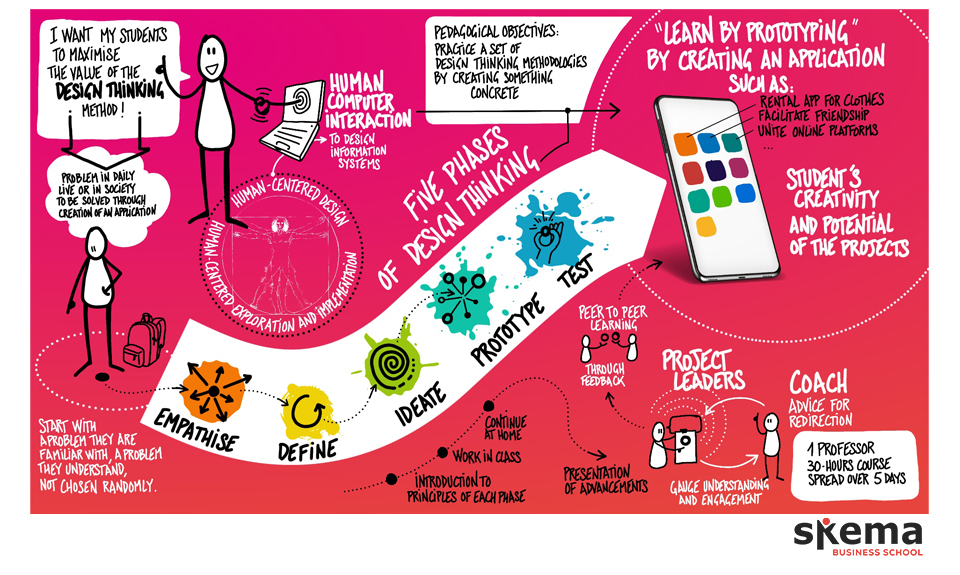I had once gone to 2-day Design Thinking workshop where the theme was Transportation. The coach had taken us through the 5 classics phases of design thinking. We did quick interviews of the different participants during the empathise phase. We built our prototypes using arts and crafts materials, and we had a lot of fun doing it. But at the end of the workshop I still found myself thinking that the problem we tackled was too abstract and the work done during the designing thinking phases too superficial. So when I was asked to teach a Design Thinking course, I really wanted to make sure that my students maximised the value of the design thinking method.
Digitalisation is indispensable to our daily life and is evolving in higher education in terms of teaching and learning. My Ph.D. was obtained in human-computer interaction (HCI) in computer science. In this discipline, human-centered design methodologies are applied to design information systems. Design thinking is about human-centered exploration and implementation and it follows the same methodologies in HCI. Moreover, I have been teaching user experience (UX) design for a long time and it follows the same principle and approaches. So for me it was natural to combine HCI with Design thinking and create a course whose main objective it to “Learn by Prototyping” by creating an application.
I grounded the 5 phases of designing thinking by first asking the students to think of a problem that they see in their daily lives or in society at large that can be solved through technology, more specifically through the creation of an application. This helped ground the methodology of design thinking because it starts with a concrete problem that they are familiar with, a problem they understand, rather than a problem chosen randomly. Also, knowing that they would have to prototype an app as a final product gave them a clear goal to achieve at the end of the project.
For every week we met, we moved to a different phase in the designing thinking process. I would introduce them to the principles of each phase, we would start work in class, and then the students would continue work at home. During the next class they would present to me their advancements, and it was during this time I gauged their understanding and engagement, and I gave advice when I felt that they needed redirection. Each class was new and inspiring as students worked on their own ideas. They were leaders of their own project, and I was just their coach. Peer to peer learning was also an important part of the process. Students would proudly share their prototypes with each other, and give each other constructive feedback before handing in their final project.
At the end of the course, students create a variety of apps such as rental app for cloths, an app to facilitate friendships at SKEMA, and an app to improve and unite the various online platforms they use at SKEMA, and many more! I was always surprised by students’ creativity and the potential of the projects they developed.






